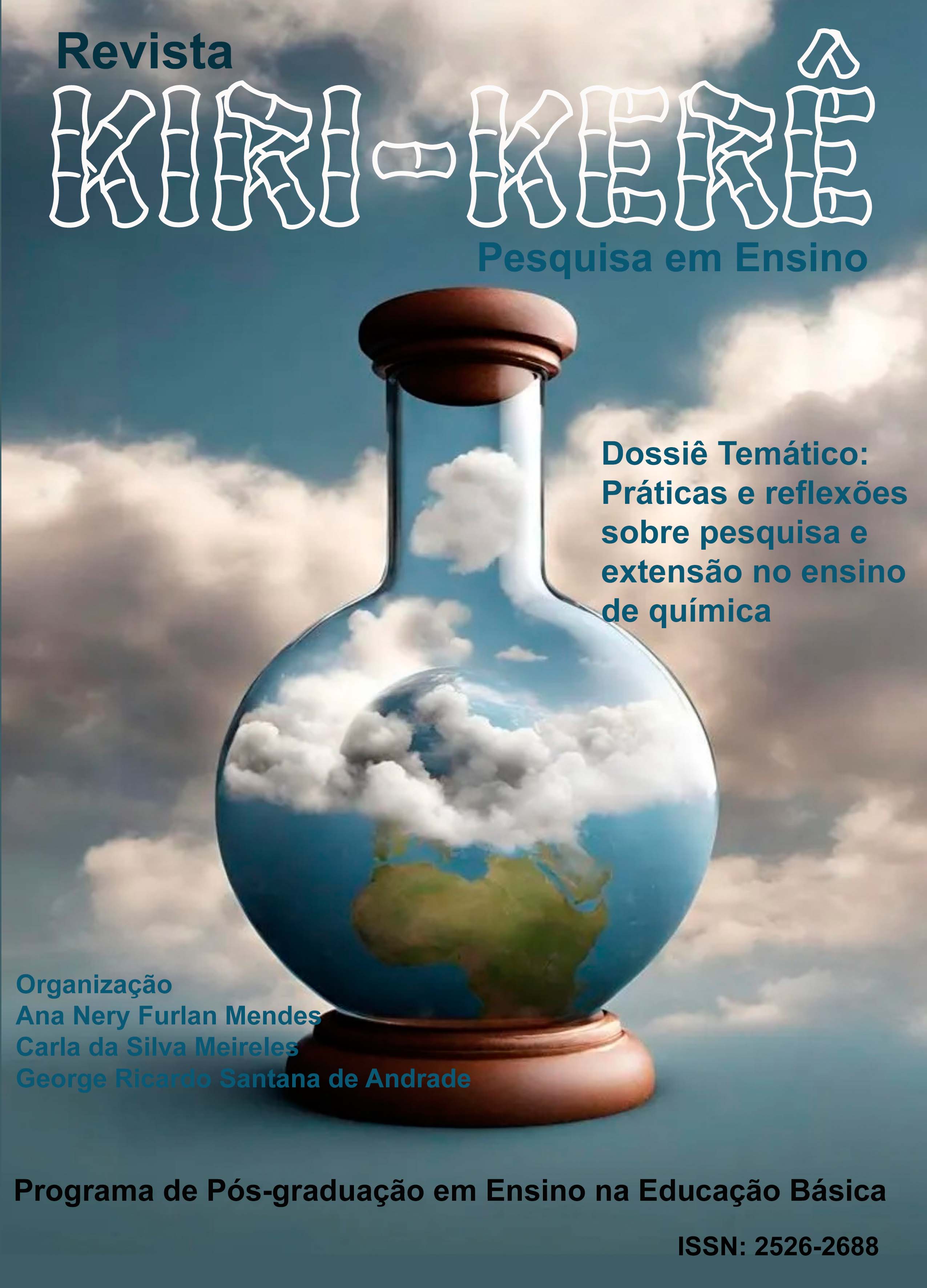Chemical reactions for 6th grade students
a stop motion approach
DOI:
https://doi.org/10.47456/krkr.v1i17.44571Keywords:
Audiovisual resources; Basic education; TDIC; Chemistry TeachingAbstract
Audiovisual resources are a widely used alternative from the perspective of Digital Information and Communication Technologies, especially as teaching tools that can be developed using smartphones, tablets, computers, etc. The application the use of teaching materials with sounds and images helps to introduce abstract content and is an attractive tool for constructing theoretical concepts in chemistry. Among the techniques used to produce videos, we would highlight Stop Motion, which consists of photographic recordings of minimal movements of objects in order to later combine the photos into a video. The aim of this work was to use the Stop Motion technique to create a video about chemical reactions. The material produced went through a validation process and, after corrections, the video was shown to 13 6th grade students at a municipal school in São Mateus/ES. The results of the application show that this type of material has the potential to be applied to teaching chemistry to elementary school students, as it awakens students' motivation to study this science, as well as contributing to the teaching practice of teachers at this level of education.
Downloads
References
BATISTA, M. B. O. O Vídeo como Ferramenta Didática para o Ensino de Ecologia. 2013. 18 p. Trabalho de Conclusão de Curso (Graduação em Ciências Naturais Licenciatura) - Universidade de Brasília, Brasília, DF, 2013. Disponível em: https://bdm.unb.br/bitstream/10483/5893/1/2013_MarceloBorgesDeOliveiraBatista.pdf. Acesso em: 20 fev. 2024
FERRASA, I. A. C. et al. Os eventos de Instrução de Gagné implicados aos jogos de Quis na matemática. Revista Eletrônica de Educação Matemática - REVEMAT, v. 16, p. 01-26, jan./dez., 2021. DOI: https://doi.org/10.5007/1981-1322.2021.e77807
GONÇALVES, L. J.; VEIT, E. A.; SILVEIRA, F. L. Textos, Animações e Vídeos para o Ensino-Aprendizagem de Física Térmica no Ensino Médio. Experiências em Ensino de Ciências, v. 1, n. 1, p. 33-42, 2006. Disponível em: https://if.ufmt.br/eenci/artigos/Artigo_ID17/pdf/2006_1_1_17.pdf. Acesso em: 25 fev. 2024.
LEFFA, V. J. Como produzir materiais para o ensino de línguas. In: LEFFA, V. J. (org.). Produção de Materiais de Ensino: Teoria e Prática. 2 ed. Pelotas: EDUCAT, 2007, p. 32. Disponível em: https://www.leffa.pro.br/textos/trabalhos/Producao_materiais_2ed_completo.pdf Acesso em: 15 mar. 2024.
LEITE, B. S. Tecnologias no ensino de química: teoria e prática na formação docente. Curitiba: Appris, 2015.
LEITE, B. S. Stop Motion no Ensino de Química. Química Nova na Escola. v. 42, n. 1, p. 13-20, 2020. Disponível em: http://qnesc.sbq.org.br/online/qnesc42_1/04-EQM-26-19.pdf. Acesso em: 10 mai. 2023.
MARCONI, M. A; LAKATOS, E. M. Fundamentos da Metodologia Científica. 5 ed. São Paulo: Editora Atlas, 2003.
MOREIRA, M. A. Aprendizagem significativa subversiva. Série-Estudos - Periódico Do Programa De Pós-Graduação Em Educação Da UCDB, 2013. https://doi.org/10.20435/serie-estudos.v0i21.289
NEVES, N. N.; SANTOS, A. R. O uso das tecnologias digitais da informação e comunicação para a experimentação no ensino de química: uma proposta usando sequências didáticas. Scientia Naturalis, v. 3, n. 1, p. 194-206, 2021. Disponível em: https://periodicos.ufac.br/index.php/SciNat/article/view/4711. Acesso em: 20 fev. 2024.
SHAW, S. Stop motion: técnicas manuais para animação com modelos. Rio de Janeiro: Campus Elsevier, 2012. (Media Technology).
Downloads
Published
Issue
Section
License
Copyright (c) 2024 Felipe dos Santos Silva, Ana Nery Furlan Mendes

This work is licensed under a Creative Commons Attribution-NonCommercial 4.0 International License.
The authors accept, when sending their works, the assignment of their copyrights.


